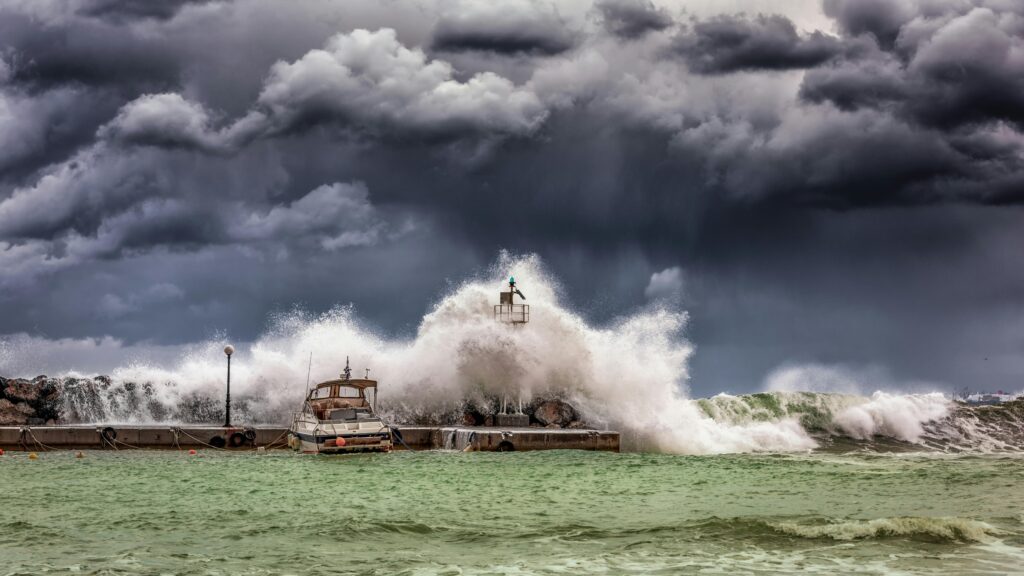
Last year turned out to be one of the most expensive on record in terms of insurance payments resulting from natural disasters.
In 2024, financial claims made to insurance companies reached copy40 billion, the third most expensive year for insurers in the last four decades, according to Munich Re’s report, titled “Climate change is showing its claws: The world is getting hotter, resulting in severe hurricanes, thunderstorms and floods”.
The insurance industry is feeling the impact of natural disasters, while climate change is accused of making natural disasters more destructive. For example, in September, hurricanes Helene and Milton struck the US, causing widespread destruction. The same month, Typhoon Yagi swept through the Philippines, China’s Hainan Island, Vietnam, and Myanmar, claiming around 850 lives.
The unpredictability and expense of climate-related disasters have prompted governments and insurers to seek new financial mechanisms to help them cope with higher risks.
One such up-and-coming financial tool is the “catastrophe bond”. It is an insurance-linked debt security that will provide faster financial relief after disaster strikes, unlike traditional aid, which can take months or years for victims to get paid.
In terms of incentives, investors will receive regular interest payments in exchange for bearing more risk. If no disaster occurs, they recover their initial investment at maturity, with a much higher return.
According to the Swiss Re Global Cat Bond Total Return Index, catastrophe bonds delivered returns of 20% in 2023 and 18% in 2024, outperforming traditional bonds. With impressive returns, the demand for this new type of bond reached a record high of copy7.7 billion in 2024.
Investors are drawn to catastrophe bonds not only for their high yields. Unlike traditional bonds in financial markets, the catastrophe bond has a relatively low correlation with, and is less impacted by the usual volatile market factors.
For policymakers and potential victims, this financial debt instrument is tailored to their needs. For example, the catastrophe bond pays compensation even when the insured losses exceed a predetermined threshold. The only drawback is that verifying extra losses can be time-consuming, leading to potential delays in payouts.
Despite, its unique conditions, the bond rarely invites disputes on financial claim as the legal conditions of this bond are unified with insurance industry standards.
The conditions of payment include measurable physical factors such as wind speed, earthquake magnitude or rainfall levels on the insured property and areas liable to claim the money. Unique and specific geographic and physical data makes the bond suitable for disaster-prone regions.
Several countries have made use of catastrophe bonds to manage extreme weather risks. The Philippines, under a World Bank-facilitated catastrophe bond, was compensated $52.5 million after Typhoon Rai (Odette) in 2021. In this case, the World Bank-facilitated catastrophe bond covered tropical cyclones and excess rainfall over a three-year term, offering maximum coverage of copy50 million.
However, a major challenge remains. Until now, catastrophe bonds have focused on peak perils — major disasters such as hurricanes and earthquakes — because they are easier to model and predict.
In contrast, secondary perils which include floods, wildfires, hailstorms and severe storms — are more frequent but harder to predict.
Since flooding in Thailand is categorised as a secondary peril, securing catastrophe bond coverage can be difficult and costly.
The catastrophe bond is also not a heaven-sent solution; it has problems, too.
In the case of Hurricane Beryl in the Caribbean in July 2024, despite massive damage to infrastructure and farms, the insurance company refused to pay because the stipulated air pressure of the hurricane had not met the level that was set in the insurance contract. Therefore, the Jamaican government had to cover the liability.
Conservationists and climate experts also warn that buyers of catastrophe bonds can become complacent and do not improve infrastructure or behaviour to prevent floods and reduce emissions.
Additionally, risk models are not yet updated frequently enough to keep up with fast-spreading natural disasters and climate change. The lack of long-term data and uncertainties in climate risk forecasting could deter investors from entering the market.
Despite these challenges, catastrophe bonds remain one of the few viable financial solutions for managing extreme weather risks in countries like Thailand.
The World Bank is trying to promote its catastrophe bond markets, especially to cover secondary perils such as floods and droughts in emerging economies. These initiatives could make catastrophe bonds more accessible and affordable.
The good news is that the Thai government last year issued its first sustainability-linked bond, raising 30 billion baht, with interest rates tied to the country’s climate and energy transition goals.
This was the first government-issued sustainability-linked bond in Asia and only the third globally. Building on this momentum, Thailand could explore the issuance of a sovereign catastrophe bond specifically for flood risk management, creating a new avenue for climate adaptation financing.
First published on the ฺBangkok Post.
